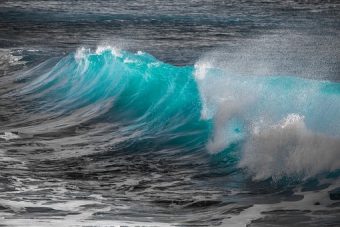
Everybody is talking about a new EU clean power project that pairs floating solar with offshore wind turbines, but they’re missing half the story. Wave energy is also part of the project.
The wave part is not getting much attention, probably because wave-to-electricity conversion has fallen behind wind and solar in the renewable energy race. Nevertheless, if all goes according to plan, the waters of the EU will be peppered with wave conversion devices as well as floating solar panels.
More Offshore Solar & Wind Turbines With Wave Energy, Too
The EU project is tackling the problem of how to make room for new offshore energy industries in busy coastal waters. Finding sites for new offshore wind farms can be a tough row to hoe, as offshore wind fans in the US can testify.
More:
The new project is called EU-SCORES for “European SCalable Offshore Renewable Energy Sources.” The idea is to pair wind turbines with other clean power systems, with the aim of reducing the overall footprint of marine energy development.
EU-SCORES comes under the umbrella of the Dutch Marine Energy Centre, which will assess two sites for hybrid marine energy systems. One is a solar-plus-wind site in Belgium, which has been getting a lot of attention, and rightfully so. Floating solar is a relatively new idea that has been catching on fast for application to inland water bodies including reservoirs as well as natural lakes and ponds. The idea of setting solar panels afloat in the open sea poses new technology challenges.
In that regard, EU-SCORES shares some similarities with the CrossWind offshore wind project under way in the Netherlands, which is also on track to receive floating solar panels.
However, EU-SCORES seems to be taking a much more aggressive approach to hybridizing offshore wind farms. As DMEC describes it, the “full-scale demonstrations are intended to prove how the increased power output and capacity installed per km2 will reduce the amount of marine space needed, thereby leaving more space for aquaculture, fisheries, shipping routes and environmentally protected zones.”
“Additional benefits achieved by co-using critical electrical infrastructures and exploring advanced operation and maintenance methodologies supported by innovative autonomous systems should lower the costs per MWh,” DMEC adds.
You can read the whole article HERE.
Source: Clean Technica

